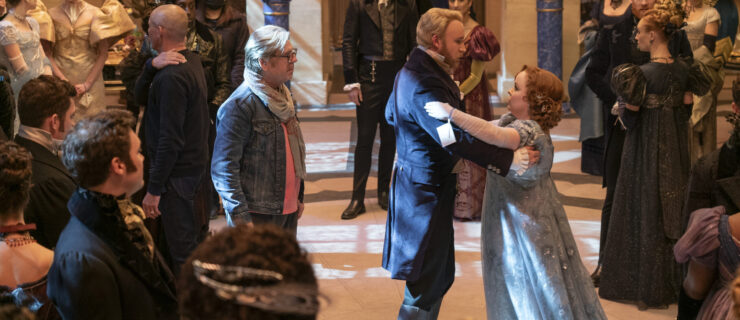Acing A Capella

Chloé Arnold (by Matthew Murphy)
You walk onstage for your tap routine—click, click, click—and take your opening position for a performance a capella (without music). You begin to dance, each tap breaking the silence in the theater all over again. Clickety-clack, ka-lack click, a-kik-kik-kik-kik clap…
Tapping a capella can be exhilarating, but with no beats to back you up, it can also be nerve-racking. It’s up to you to keep a steady pace—and the audience’s attention. Master teacher Gregg Russell of Tap Sounds Underground says your first a capella tap performance can be like a first bicycle ride without training wheels. “You’re not just dancing without a song,” he says. “You’re creating a song from scratch. With the true a capella masters, you feel their music. You can almost hum along with them.”
Keep It Interesting
There’ll be nothing to hum along to unless you inspire the audience with a broad range of textures, dynamics and changes in volume. Both Russell and Chloé Arnold, a dancer-choreographer who leads the all-female tap group Syncopated Ladies, recommend giving the steps you already know a good workout. Challenge yourself to choreograph a full minute of material using only heel drops, for example, and you’ll quickly find that you need to get creative. It might be useful to give your different types of heel drops nicknames and write them down in a notebook. Repeat the exercise with another step, such as paradiddles, and before you know it you’ll have page after page of secret weapons. The same applies to time signatures. (They’re the basic groove you’re working with, like a waltz, for example, or a classic 4/4.) Try to exhaust the possibilities in one before switching to another.
A capella tap is about knowing how to make each step come to life, Arnold says. “There are infinite variations on any theme. For a cramp roll, you can make the sound even, like a drum roll, or you can give two beats, hold back for the third, and hit the fourth a little later. You’ve got the steps; how do you take them and create musical patterns? That’s what’s going to be interesting.”
Go with the Flow
You’ll also have to make your own structure for each piece. Compose unique sections with smooth transitions, or bridges, between them. Pro tapper Anthony Morigerato thinks of a tune he likes—Duke Ellington’s “Caravan” is a favorite—and plays it in his head. “That gives it form, some rhyme and reason, rather than just a bunch of steps thrown together,” he says. Take mental notes when you hear a song that has a compelling beginning, middle or end. Ask yourself why it works and think of ways to create the same effect with your shoes.
“You’ll start to understand flow,” Arnold says. “You’ll realize how many different paths you can take to get from one place to another.”

Anthony Morigerato (by Laura Haley)
Step in Time
Just don’t take your eyes off of the “road”: your tempo. A capella tappers tend to accelerate, especially in front of an audience. That might make the most complicated part of your routine impossible to pull off once you get to it. Relaxing your upper body and remembering to breathe can act as cruise control.
Steady pacing becomes even more crucial if you’re sharing a stage a capella with other dancers. Ensemble choreography without accompaniment offers rich possibilities, like rhythmic counterpoint (different grooves layered on top of each other) and canon (the ripple effect sometimes called a “round”). Drift out of synch with your teammates, however, and that all falls apart.
Cartier Williams confirms that “the audience knows right away when you fall off time. It doesn’t sound right.” From age 4 to 10, the 23-year-old did almost all of his practicing without music. “I was just improvising, putting steps together on my own and figuring it out.”
He says two and a half or three minutes is perfect for a solo. “Get them excited, keep it short and sweet, and then get out of there.”
Whether an a capella number goes well or not, don’t let it show on your face, and know how to bring it home, Morigerato advises. Try putting your own spin on a classic ending, like giving the crowd three repeats of a short combination, followed by a fourth with a twist. (That’s called “three and a break.”) “Repetition is something an audience can really dig,” Arnold says. Another option is a fade-out or decrescendo. “Quiet doesn’t mean ‘without energy,’ ” she says. Keep your focus going until the very last moment.
If you’re serious about tap, being comfortable performing a capella is a must. Williams tries to tell a story; Arnold imagines being a DJ; Morigerato sings a song with his feet; Russell thinks of ways to echo certain rhythms with movements. But everyone agrees that the best thing about a capella tap is the ability to bring along an audience.
“Captivate them and take them with you,” Arnold says. “Make them sit up in their chairs.”




